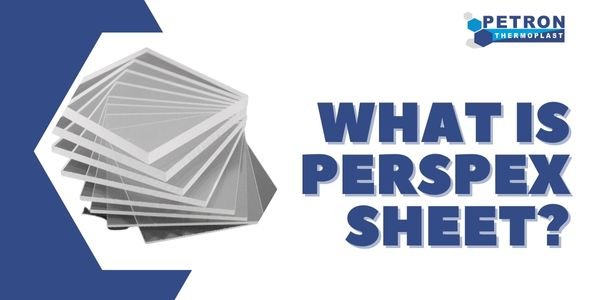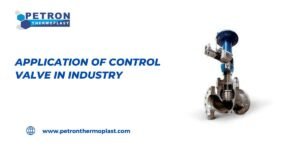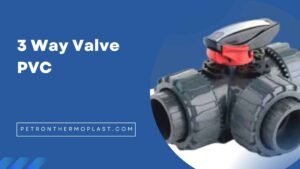Introduction
Perspex sheet is a versatile and widely used material in various industries, known for its exceptional clarity, durability, and flexibility. In this comprehensive guide, we will delve deep into the world of perspex sheets, exploring their properties, manufacturing processes, applications, and more. Whether you’re a professional in the field or simply curious about this remarkable material, this article will provide you with a comprehensive understanding of perspex sheets.
Perspex sheets, also known as acrylic sheets, plexiglass, or acrylic glass, are transparent thermoplastic panels renowned for their optical clarity and versatility. They have gained popularity in various industries, including construction, automotive, aerospace, and art, due to their unique combination of properties.
The Origins of Perspex
The term “Perspex” originally referred to a brand of acrylic sheet developed by Imperial Chemical Industries (ICI) in the 1930s. It has since become a generic term for acrylic sheets in many parts of the world. The material’s history is deeply intertwined with the evolution of plastics and the need for transparent, lightweight alternatives to glass.
Manufacturing Process of Perspex Sheet
Extrusion
One of the common methods for manufacturing perspex sheets is extrusion. In this process, polymethyl methacrylate (PMMA) pellets are heated and forced through a die to create a continuous sheet. This method is cost-effective and suitable for producing sheets of consistent thickness.
Cell Casting
Cell casting, or bulk polymerization, involves pouring liquid acrylic between two sheets of glass and allowing it to cure. This method yields sheets with exceptional optical clarity but can be more labor-intensive and costly.
Injection Molding
Injection molding is used to create complex shapes and designs from acrylic. It involves injecting melted acrylic into a mold and allowing it to cool and solidify. This process is often employed for manufacturing intricate acrylic products.
Properties of Perspex Sheets
Perspex sheets exhibit a wide range of properties that make them highly desirable for numerous applications
- Transparency: Perspex sheets are renowned for their exceptional optical clarity, allowing them to transmit up to 92% of visible light. This property makes them an excellent substitute for traditional glass in applications where transparency is crucial.
- Durability: Despite being lightweight, perspex sheets are incredibly durable and impact-resistant. They can withstand significant physical stress without shattering, which enhances safety in various settings.
- Weather Resistance: Perspex sheets exhibit outstanding resistance to environmental factors such as UV radiation and weathering. They can maintain their clarity and structural integrity when exposed to the elements, making them suitable for outdoor applications.
- Lightweight: One of the advantages of perspex sheets is their low density. They are significantly lighter than glass, making them easier to handle, transport, and install, which can be particularly beneficial in construction and transportation industries.
- Chemical Resistance: Perspex sheets are resistant to many chemicals, making them suitable for use in laboratories, chemical processing facilities, and other environments where exposure to corrosive substances is a concern. This property ensures their longevity and reliability.
- Thermal Insulation: While not as effective as some other materials, perspex sheets provide a degree of thermal insulation. They can help reduce heat transfer, which can be advantageous in applications requiring temperature control, such as greenhouses.
- Electrical Insulation: Perspex sheets are electrically insulating, making them suitable for use in electrical and electronic equipment where avoiding electrical conductivity is essential for safety and functionality.
- Customizability: These sheets can be easily cut, shaped, and fabricated to meet specific requirements. This customizability allows for the creation of intricate designs and tailored solutions in various industries, including art and signage.
- Sound Transmission: Perspex sheets can transmit sound, making them useful in applications like acoustic barriers. They can be designed to absorb or reflect sound waves, contributing to noise reduction.
- Variety of Types: There are different types of perspex sheets available, including clear, colored, textured, UV-resistant, and frosted varieties. Each type has its unique set of properties and is suited to specific applications.
- Recyclability: Acrylic, the primary material in perspex sheets, is recyclable. This promotes sustainability and reduces the environmental impact of these sheets when properly managed in recycling programs.
- Fire Resistance: While not inherently fireproof, some perspex sheets can be manufactured with fire-resistant properties. These sheets can withstand exposure to flames and high temperatures to a certain extent.
- Optical Properties: Perspex sheets offer excellent light transmission, minimal distortion, and low internal scattering, making them ideal for applications that require precise optics, such as lenses and optical instruments.
Types of Perspex Sheets
Perspex sheets come in various types, each tailored to specific applications:
- Clear Perspex: This is the standard, clear acrylic sheet that most people associate with Perspex. It offers excellent optical clarity and is commonly used for windows, protective screens, displays, and signage.
- Colored Perspex: Acrylic sheets can be tinted or colored during the manufacturing process to achieve a wide range of colors. Colored Perspex sheets are used for decorative purposes, signage, and artistic projects.
- Opal Perspex: Opal or opaque Perspex sheets are translucent but not transparent. They diffuse light, making them ideal for lightboxes, signs, and architectural applications where a soft, even illumination is desired.
- Mirror Perspex: Mirror acrylic sheets have a reflective surface similar to a traditional glass mirror but are much lighter and more durable. They are used in interior design, retail displays, and decorative applications.
- Frosted Perspex: Frosted acrylic sheets have a matte, textured surface that diffuses light and provides privacy. They are often used for partitions, shower screens, and decorative elements.
- UV-Resistant Perspex: Some acrylic sheets are treated to be UV-resistant, which makes them suitable for outdoor applications. They can withstand prolonged exposure to sunlight without yellowing or becoming brittle.
- Fluorescent Perspex: These acrylic sheets are infused with fluorescent pigments, making them glow under UV or blacklight. They are popular for signage, artwork, and decorative installations.
- Anti-Glare Perspex: Anti-glare acrylic sheets are designed to reduce reflections and glare, making them suitable for picture framing, museum displays, and electronic device screens.
- Impact-Resistant Perspex: This type of acrylic sheet is engineered to be more impact-resistant than standard acrylic. It is used in applications where increased durability and resistance to breakage are essential.
- Fire-Retardant Perspex: Fire-retardant acrylic sheets are formulated to meet fire safety regulations. They are used in buildings and areas where fire safety is a concern.
- Scratch-Resistant Perspex: These sheets have a special coating that makes them more resistant to scratches and abrasions. They are often used in retail displays and protective applications.
- Bulletproof Perspex: For high-security applications, there are bulletproof or ballistic acrylic sheets that can resist bullets and projectiles.
Applications of Perspex Sheets
The versatility of perspex sheets is reflected in their wide-ranging applications across various industries:
- Signage: Perspex sheets are often used for outdoor and indoor signage. They can be easily cut into various shapes and sizes and are durable enough to withstand different weather conditions.
- Display Cases: Perspex is commonly used to create display cases for museums, retail stores, and exhibitions. It offers excellent clarity and UV resistance, protecting valuable items from dust and damage.
- Lighting: Perspex sheets are used in the lighting industry for diffusers and light fixtures. They can be laser-cut to create intricate designs that enhance the aesthetic appeal of lighting installations.
- Furniture: Acrylic furniture, such as chairs, tables, and shelves, is trendy due to its modern and sleek appearance. Perspex sheets are also used to make protective covers for furniture.
- Architectural Glazing: In architecture, acrylic sheets can be used as windows, skylights, and canopies. They provide natural light while being more lightweight than glass.
- Aquariums: Large acrylic sheets are commonly used to construct aquariums. They offer excellent clarity and are less prone to shattering than glass.
- Medical Equipment: Acrylic is used for medical equipment like isolation boxes, splash guards, and protective barriers due to its transparency, ease of cleaning, and durability.
- Automotive: In the automotive industry, Perspex sheets are used for windows in certain vehicle models, especially in racing cars and boats, due to their lightweight properties.
- Picture Frames: Acrylic picture frames are a popular choice for framing artwork and photographs. They are lighter and less prone to breakage than glass frames.
- Point of Sale Displays: Perspex sheets are used to create custom point-of-sale displays for retail stores to showcase products attractively.
- DIY Projects: Many hobbyists and DIY enthusiasts use acrylic sheets for various projects, such as making custom enclosures, model displays, and craft items.
- Noise Barriers: Acrylic sheets are used as noise barriers along highways and railways to reduce noise pollution while allowing visibility.
- Greenhouses: Perspex sheets can be used in greenhouse construction to provide insulation and natural light for plants.
- Art and Sculptures: Artists use acrylic sheets as a medium for creating unique art pieces and sculptures due to their versatility and ability to hold vibrant colors.
- Security Barriers: Banks, convenience stores, and other businesses use acrylic sheets as security barriers to protect employees and valuables.
- Electronic Displays: Acrylic is used for the protective covers of electronic displays and touch screens, such as ATM screens and kiosks.
- Aerospace: In the aerospace industry, acrylic sheets are used for aircraft windows due to their lightweight nature and impact resistance.
- Medical Devices: Acrylic is used for manufacturing various medical devices, including incubators, dental equipment, and protective shields.
- Sports Equipment: Acrylic sheets can be used in sports applications, such as for backboards in basketball hoops.
- Soundproofing: Acrylic panels are used in soundproofing applications to reduce noise levels in recording studios, home theaters, and industrial settings.
Advantages and Disadvantages
Advantages:
- Transparency: Perspex sheets are known for their excellent optical clarity, allowing for the transmission of light without significant distortion. This makes them a suitable replacement for glass in many applications.
- Lightweight: Perspex is much lighter than glass of the same thickness, making it easier to handle, transport, and install. This property is particularly advantageous in applications where weight is a concern.
- Impact Resistance: Perspex is highly impact-resistant compared to glass. It is less likely to shatter upon impact, reducing the risk of injury and damage in environments where safety is a concern.
- Weather Resistance: Perspex sheets are resistant to UV radiation and weathering, making them suitable for outdoor applications without the risk of yellowing or degradation over time.
- Customizable: Perspex sheets can be easily cut, drilled, and shaped to fit specific requirements. They are available in various thicknesses and can be easily molded or thermoformed into different shapes.
- Insulation Properties: Perspex has good insulation properties, both thermal and electrical. This makes it suitable for use in electrical enclosures and applications where thermal insulation is required.
- Chemical Resistance: Perspex is resistant to many chemicals, which makes it suitable for use in laboratories and other environments where exposure to chemicals is a concern.
Disadvantages:
- Scratch-Prone: Perspex sheets can be susceptible to scratches, which can reduce their optical clarity over time. Special coatings or care are required to minimize scratching.
- Lower Hardness: While Perspex is impact-resistant, it is not as hard as glass, and it can be more prone to surface damage if not handled carefully.
- Thermal Expansion: Perspex has a higher coefficient of thermal expansion compared to glass, which means it can expand and contract more with temperature changes. This can be a consideration in some applications.
- Flammability: Perspex is flammable and can release toxic fumes when burned. It is not suitable for applications where fire resistance is a primary concern unless treated with fire-retardant coatings.
- Cost: Perspex sheets can be more expensive than some other plastic materials, which can be a drawback for cost-sensitive projects.
- Not as Rigid as Glass: In very large sheet sizes, Perspex may not be as rigid as glass, which could be a concern in specific applications.
Care and Maintenance
To ensure the longevity and appearance of perspex sheets, proper care and maintenance are essential
- Use a soft, non-abrasive cloth to clean the surface.
- Avoid using harsh chemicals or abrasive cleaners that can scratch the material.
- Regularly inspect for scratches or damage and replace if necessary.
Future Trends in Perspex Sheet Technology
As technology continues to advance, the future of perspex sheets looks promising. Innovations in coatings, manufacturing processes, and sustainability are likely to shape the industry’s direction. Look out for advancements in self-cleaning coatings and enhanced UV resistance.
Conclusion
Perspex sheets have undoubtedly left an indelible mark on various industries, offering a remarkable combination of transparency, durability, and versatility. Whether you encounter them as architectural glazing, automotive windows, or art installations, their presence is a testament to human ingenuity and the endless possibilities of materials science. As technology advances and new innovations emerge, we can expect perspex sheets to continue evolving, meeting the ever-changing demands of our modern world.
FAQs
What is the difference between Perspex and acrylic sheets?
While the terms are often used interchangeably, “Perspex” is a brand name for a specific type of acrylic sheet. Acrylic sheets, on the other hand, refer to a broader category of sheets made from acrylic polymers. Perspex sheets are a subset of acrylic sheets known for their quality, clarity, and durability. So, all Perspex sheets are acrylic sheets, but not all acrylic sheets are Perspex.
Can Perspex sheets be used outdoors?
Yes, Perspex sheets are suitable for outdoor use. They are highly weather-resistant and won’t yellow or degrade when exposed to sunlight, making them a reliable choice for outdoor applications such as architectural glazing, signage, and protective barriers.
Are Perspex sheets as strong as glass?
Perspex sheets are known for their durability and impact resistance. They are less prone to shattering compared to glass, which makes them a safer option in many situations. However, the exact strength may vary depending on the thickness of the Perspex sheet and the specific type of acrylic used.
How do I clean and maintain Perspex sheets?
To maintain the optical clarity and longevity of Perspex sheets, it’s important to clean them regularly with a soft, damp cloth to remove dust and dirt. Avoid using abrasive materials or harsh chemicals that can scratch or damage the surface. For stubborn stains, a mild detergent diluted in water can be used. Additionally, store Perspex sheets away from direct sunlight to prevent yellowing over time, and handle them with care to avoid impacts or drops.
You may also like – Polycarbonate Sheet | Custom Plastic Injection Molding




